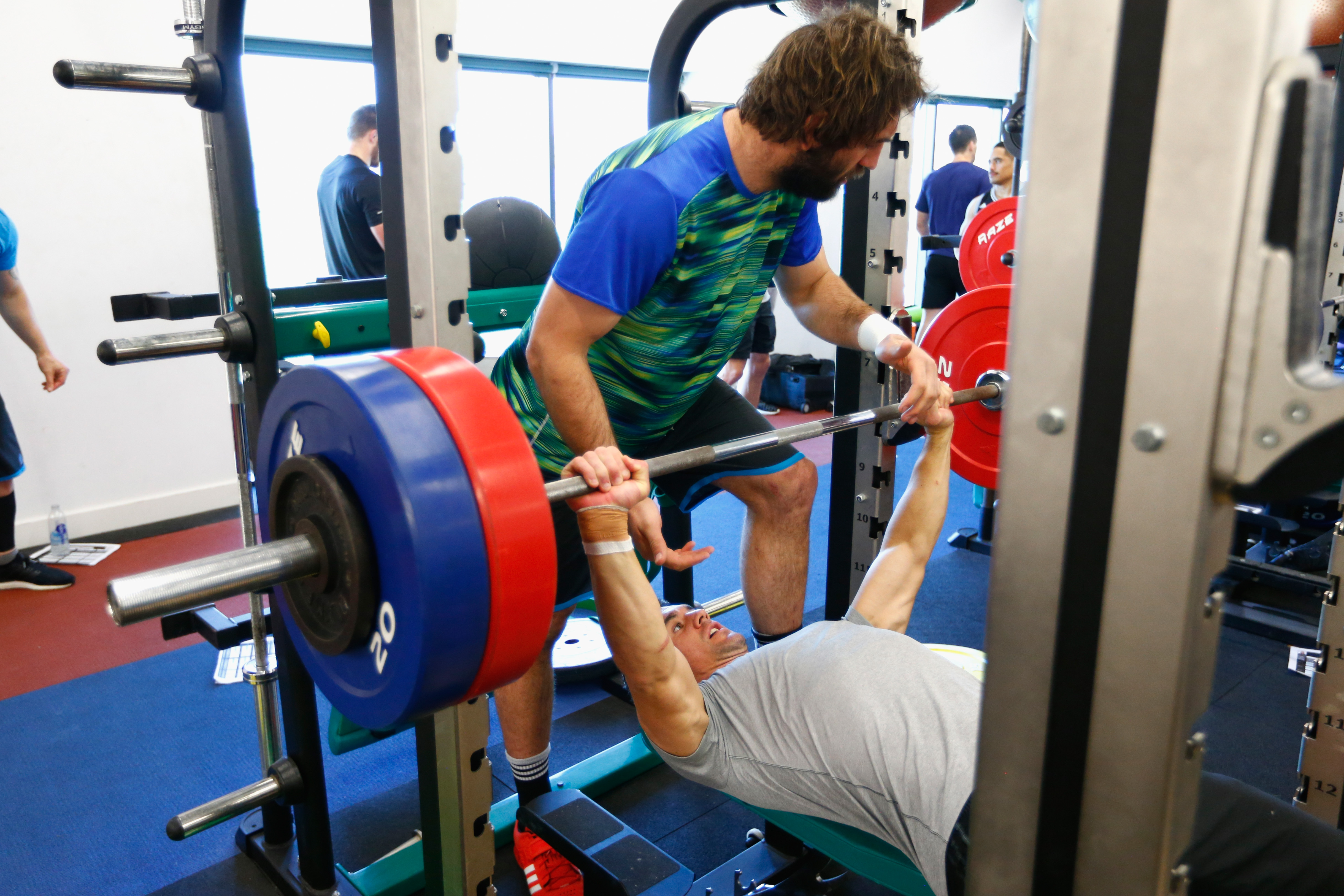For long-lasting muscle and strength, how should you lift?
According to physique coach Mark Coles, what’s best is a mixture of rep ranges, using both heavy and light weights.
When it comes to building muscle, many people often debate whether high reps or heavy weights are more effective. In reality, Coles suggests the truth is actually a combination of the two.
“Lifting heavy weights for a relatively high number of reps is what tends to really stimulate impressive muscle hypertrophy.”
This is why periods of strength-specific training can be a very effective strategy to enhance physique development. Coles believes that strength cycles that split up traditional bodybuilding routines can help you truly develop your genetic capacity for strength.
When you eventually migrate back to specific hypertrophy (muscle growth) training, you can do so with a renewed intensity and increased ability to lifting heavier loads.
This provides a potent formula for muscle growth.
Rep it out
While there are almost an infinite number of highly-effective training methods, the classic hypertrophy training zone remains the 8-12 rep strategy, lifting with 50 to 75% of your one rep max for three to five sets per exercise.
As an example, pro-bodybuilder and expert trainer Ryan John-Baptiste recalls the example of a particular client he was training.
“My client could bench press 75kg for 12 reps, training with 75% of their one rep max (100kg) – prior to beginning a strength-training plan.”
https://www.instagram.com/p/Bge0Orbn2ed/?hl=en&taken-by=ryanjohnbaptiste
After strength training
John-Baptise placed his client on a dedicated strength-training phase for eight weeks, focussing on heavy weights with lower reps.
The client’s one rep max increased by 20% to 120kg – allowing them to hit ten reps with 90kg when they switched back to their higher-rep muscle gain routine.
While it’s true that you can progress in a similar fashion without strength-specific training a strength-specific cycle is likely to forge faster results and have a greater magnitude.
Progressive overload, the way in which the weights you lift get progressively heavier, is also enhanced by following such a plan. This ensures your body adapts to increasingly demanding training by getting bigger and stronger.
Long-term gains
There are many training plans that effectively increase strength gains, with different approaches all proving to be useful depending on personal preferences and training level.
Hybrid plans that simultaneously boost strength and muscle growth are included in this.
However, the fundamentals of underpinning a surge in strength rely on training with 80-90% of your one rep max (around 3-5 reps per set) for three to five sets of a compound exercise.
The best compound exercises:
Bench press
Squat
Deadlift
Pull-up
Dips
Overhead press
Coles, also a Scitec ambassador, notes that when following a strength-based plan, you need to focus on activating your central nervous system (CNS) prior to training.
CNS function depends on your ability to focus, and this is where caffeine can work wonders in your favour.
Whether you take it in a pre-workout or hot cup of Joe, it’s an ergogenic aid, meaning it can be taken by the body to supercharge strength and performance.
This should be followed by a dynamic warm-up, according to Coles. Jump squats, plyometric (clap) press-ups and progressively heavier warm-up sets work best prior to heavy lifting.
“The CNS is crucial for the firing of fast-twitch muscle fibres, so never try and lift heavy without a strength-specific warm-up – or you’ll sell yourself short on strength gains.”
Once your strength gains plateau – typically after 6-8 weeks – it would be wise to switch back to higher volume hypertrophy workouts and reap the rewards.
It’s worth noting that your individual response to training load can vary depending on genetics. Some of you may gain mass from lower reps, while others may only get stronger.
Either way, getting stronger is something that shouldn’t be over-looked by anyone seeking optimal results from their physique training.











































